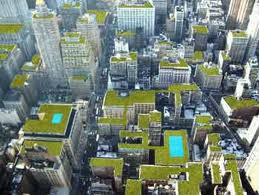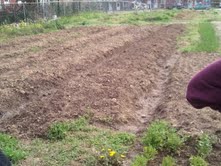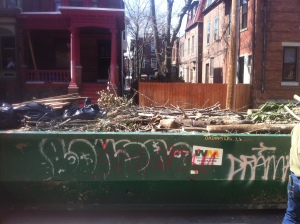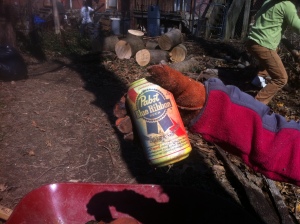Perhaps one of the most heavily debated upon issues for political and scientific reasons is global warming. It has a particularly politically charged meaning and its existence is questioned as groups separate into believers and nonbelievers. But if any action to change the planet it taken, it needs to effect the economy, the environment, and the society.
Here, it is referred to as climate change, a proven scientific phenomenon that has happened before and very well be happening now, but for a different reason. Climate change is the long term change of weather patterns over time; however, human-caused activities are forcing the planet to heat up, most likely due to the burning of fossil fuels and the increase within cities.
Urban life is quite possibly one of the main reasons evidence of climate change is happening; therefore, management strategies should be used to adapt and redirect climate change. The Greenhouse effect has been magnified by global warming because the gases can become stuck within the atmosphere.
In urban areas, where there is more density in population, the heat island effect occurs. It heats up the city. Nature’s own checks and balance, trees, are featured less prominently. Urban areas are the founders of industrial revolution and emissions. Although they established some of the first mass uses of public transportation, enough emissions are used to cause worry.
Recently, a new rise in environmentalism has given rise to sustainable development and green management strategies. Particularly the European Union region has devoted time and energy to develop and nurture green developments in the job sector, the physical environment, and the carbon offset. However, it appears that it did not follow management strategies well enough. But more on that later.
The European Union wants to increase 20% of its resources to be renewable. It wants to meet part of the Greenhouse Gas reduction obligations outside the EU through international offsets. The EU wants biofuel. It wants a redesign of architectural buildings. The only want to do this is through management. They followed the Kyoto Protocol.
“The protocol sets binding targets for 37 industrialised countries and the European community for reducing greenhouse gas(GHG)emissions. The targets amount to an average reduction in emissions of 5% against 1990 levels over the five-year period, 2008–2012” (Analysis of the EU policy package on climate change and renewables Pantelis Capros a, Leonidas Mantzos a, Leonidas Parousos a, Nikolaos Tasios a, GerKlaassen b,n, Tom VanIerland b.).
The European Union has recognized that management strategies need to be calculated and observed and effected over time. “…one carbon offset represents the reduction of one ton of CO2,e.g. the offset value denotes a net emission reduction (CO2-eq ton). In practice, this means methods for quantifying emission reductions should be conservative to avoid overstating a project’s effect…Current carbon offset programmes generally require that offset rates should be real, surplus (additional), verifiable, permanent and enforceable in terms of maintaining the integrity of an emission trading system” (Kikuchi 357). Kikuchi recognizes that carbon offset is directly correlated to the greenhouse gas effect.
“Current carbon offset programmes generally require that offset rates must be real in terms of maintaining integrity; however, these accounting processes differ from project to project, and furthermore there is doubt about how this diminution is included as a negative secondary effect in accounting for a WPG-based carbon offset” (Kikuchi 361). As Kikuchi mentions, carbon offset programmes need to change. The image above shows how carbon offset works within the current management model. Carbon offsets should be backed by regulations and tracking systems—which will define the creation of carbon offsets.
There are so many benefits to green urban management planning; one of which is employment. Green collar jobs will be created in order to act on these management strategies. In turn the economy will pick up because there is employment and gains in the economy. And the work done from the economy on the environment will eventually change the society into a more eco-friendly society. All are connected; if any are ignored, green management planning will not work.
“The method of accounting for carbon offsets reflects on the above-mentioned notion, i.e. the future environment and humanisation. If the accounting method remains ambiguous and uncertain, it will be difficult to forecast future climate change and assess whether a project is really cost-effective. It is important to establish an accurate method, because ultimately the method will determine the success of sustainable development” (Kikuchi).
Funnily enough, Kikuchi published this article in 2011, yet used data from 1997. Interestingly enough, his warnings have come undone. The European Union is expected to fail to reach its goal for environmental progress by 2020. The original goal of cutting costs down by 20% has now been reduced to 10%. One very possible explanation is that EU could not make the management strategies work for the economy, the environment, and the society. Kikuchi warns of this in his article, “Environmental and socio-economic factors in carbon offsets: an approach to sustainable management and planning in climate change strategy.”
The cut was an attempt to meet a feasible goal to reverse the human-caused effects of climate change. Yet climate change still exists and now it will exist longer. What is important is that the management strategy is not to blame. The EU is not a completely failed management strategy. It should be an example of what not to do and what to do. Most importantly form this, it is an example to follow green strategies from all sectors of life: economy, environment, society.
Sources
Environmental and socio-economic factors in carbon offsets: an approach to sustainable management and planning in climate change strategy
Kikuchi
Analysis of the EU policy package on climate change and renewables
Pantelis Capros a, Leonidas Mantzos a, Leonidas Parousos a, Nikolaos Tasios a, GerKlaassen b,n, Tom VanIerland b.).
















 Posted by emsteck
Posted by emsteck 

















